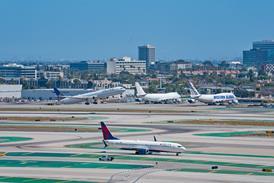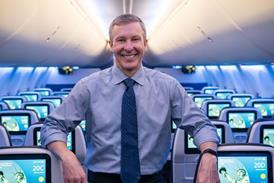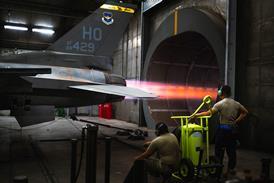Those who predicted that the world would face a serious airline accident every week within the next 10 years can now see that their gloomy forecast was, fortunately, highly inaccurate. That forecast has always been based on the fear that, if the airlines could not reduce accident rates fast enough, industry growth rates would inexorably deliver more crashes.
There was an additional factor prompting the fears. Accident rates had always, throughout the industry's history, continually improved, but the improvement rate had slowed during the 1980s. The fear was that, from about 1990, the law of diminishing returns would make it difficult to improve figures which were "already good". Such cold mathematical projections are being proven wrong. Accident rates in the 1990s have come steadily down, and, from about 1994 onward, the raw numbers trend has been dropping too.
In fact, the capacity to improve was definitely always there, because the premise that safety was "already good" was a fallacy - and remains so. It has been clear for a long time that, although some airlines and some parts of the world really were very safe, many were not, so the potential for improving world averages was significant.
This year so far has seen a really encouraging improvement in world flight safety. It is true that six months is too short a time to measure safety reliably, but when the first half of 2001 is compared with the same periods in each year for the last decade, the trend is encouraging. It mirrors the trend for full-year figures too.
But no-one ever basks in the warm sun of success for long. Just as the year's second half started, two big jets have crashed in Russia. Success needs continual work to sustain it, and there are plenty of improvements waiting to be made. Regional disparities in standards still remain, and so does the wide gulf between the standards achieved by major passenger carriers, those of regional operators and, particularly, freight airlines.
Meanwhile, it remains an eternal truth that, just when you think you know all about a well- established system, you find out something you didn't know. Because a member of an Air New Zealand (ANZ) Boeing 767 crew was monitoring raw data as well as the instrument landing system (ILS) indications during an approach to Apia, Western Samoa, he could see that in that case the ILS was showing the aircraft on glidepath when it clearly was not, yet there were no warnings of signal orinstrument faults.
As ANZ has since observed, if their 767 had crashed there would be no indication of any ILS or system error, so the crew would have been blamed. ANZ has since studied an anomaly in ILS indications that can occur while the ground equipment is being maintained, and believes that this is what might have happened to the Korean Air crew in the crash at Guam in August 1997. Not only that, but ANZ believes that up to 40 controlled flight into terrain accident reports warrant review in the light of its experiences - which other airlines have also reported. If ANZ is right, this is another area in which tragedies need not recur, because any alert crew could recognise this ILS "trap".
France's Bureau Enquêtes-Accidents (BEA) has just published a report on a collision at Paris Charles de Gaulle airport. Only one pilot died in it, but 164 people came within three seconds of disaster. The BEA has recommended a study on whether only English should be used at France's major international airports. Actually, a study is not needed, just a decision. This collision, says the BEA, was partly caused by the air traffic control's split use of English and French. The foreign pilot heard but did not understand a French flight's clearance to take off, and entered the active runway in the belief that it was he who had been cleared to do so.
French airlines have one of the world's best safety records in their global operations, and wherever they fly their pilots have demonstrated clearly their command of ATC English. So French pilots do not need ATC in French at France's international airports. On the other hand, many foreign pilots who operate at Paris Charles de Gaulle and Orly do need to hear all ATC instructions in English because, for most of them, their mother tongue is neither English nor French; and the ATC language which is universally learned by international pilots is English. International airports everywhere should consider the same issue if they do not already do so.
The industry is full of opportunities to improve safety, and this is one of the simplest to implement.
Source: Flight International























